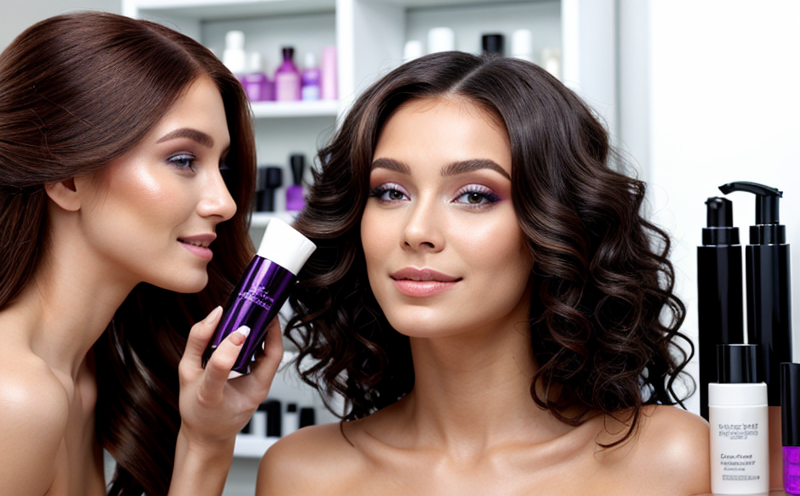Sebum Regulation Testing of Hair Shampoos
In today’s fast-paced world, hair care products have become an essential part of personal grooming. Among these, shampoos are designed to cleanse and nourish the scalp and hair, while also addressing various concerns like dandruff, dryness, and sebum overproduction. Sebum regulation testing of hair shampoos is a critical component in ensuring that these products meet safety standards and deliver effective results.
Sebum, or oily secretions from the sebaceous glands, plays a crucial role in maintaining skin health by protecting against environmental stresses. However, excessive sebum production can lead to issues like greasy hair and scalp conditions such as seborrheic dermatitis. Hair shampoos that are designed to regulate sebum play an important role in addressing these concerns. Through rigorous testing, we ensure the effectiveness of such products.
Our laboratory specializes in providing comprehensive testing services for sebum regulation properties of hair shampoos. This includes evaluating the shampoo’s ability to cleanse and manage sebum levels without stripping the scalp of essential oils. The testing process involves multiple steps that are designed to simulate real-world conditions, ensuring that the product performs consistently across different environments.
The first step in our testing process is a thorough examination of the shampoo formula. We analyze the ingredients to understand how they interact with sebum and other components of the hair and scalp. This includes checking for surfactants, emulsifiers, and conditioners that are known to influence sebum production and distribution.
Once the formulation has been evaluated, we proceed with in-vitro testing using simulated hair and scalp models. These models allow us to observe how the shampoo interacts with sebum in a controlled environment. We measure key parameters such as the amount of sebum removed from the hair shaft and the scalp, the pH level of the product, and its foaming properties. This helps us determine the shampoo’s effectiveness in cleansing without disrupting the natural balance of the scalp.
Real-world testing is also conducted to ensure that the shampoo performs consistently under various conditions. This involves testing the product on a diverse range of hair types and scalp conditions. We simulate different environmental factors, such as humidity levels and water hardness, to see how these affect the shampoo’s performance in regulating sebum.
The results from both in-vitro and real-world tests are meticulously analyzed using advanced instrumentation. Our state-of-the-art equipment allows us to measure minute changes in sebum levels with precision. This data is then used to create detailed reports that provide insights into the shampoo’s effectiveness in regulating sebum. These reports are invaluable for quality managers, compliance officers, R&D engineers, and procurement teams who need to ensure product safety and efficacy.
Our commitment to accuracy and reliability extends beyond just testing. We stay updated with the latest industry standards and guidelines, ensuring that our services align with international best practices. This includes following ISO 28195:2013 for hair care products, which provides specific requirements for evaluating sebum regulation properties.
Why It Matters
The importance of sebum regulation testing cannot be overstated. For quality managers and compliance officers, ensuring that hair shampoos meet strict safety standards is crucial to maintaining consumer trust and satisfaction. Seborrhea, a condition characterized by excessive sebum production, can lead to discomfort and irritation if not managed properly.
R&D engineers rely on such testing to innovate and refine product formulations. By understanding how different ingredients interact with sebum, they can develop shampoos that are more effective in regulating sebum levels without causing adverse effects. This is particularly important for those targeting specific consumer segments, such as individuals prone to oily scalp conditions.
For procurement teams, reliable sebum regulation testing helps in selecting high-quality suppliers and products. It ensures that the raw materials used in manufacturing are of superior quality and contribute positively to the product’s overall performance.
- Safety Compliance: Ensures compliance with international standards like ISO 28195:2013, thereby safeguarding consumer health.
- Innovation: Provides insights that drive product development and enhancement.
- Consumer Trust: Builds confidence in the brand by delivering products known to effectively regulate sebum levels.
The results of our testing are not only beneficial for manufacturers but also have wider implications. By ensuring that hair shampoos are effective in regulating sebum, we contribute to healthier scalp and hair conditions, ultimately enhancing overall well-being.
Applied Standards
Sebum regulation testing of hair shampoos adheres strictly to international standards that ensure accuracy and reliability. One such standard is ISO 28195:2013, which provides guidelines for the evaluation of sebum regulation properties in hair care products.
This standard outlines specific procedures for conducting tests on both synthetic and real human hair samples. It details how to simulate various environmental conditions that can impact sebum production, such as temperature and humidity levels. The standard also specifies the use of appropriate instrumentation for measuring changes in sebum content before and after shampoo application.
Another important aspect covered by this standard is the determination of the pH level of the shampoo, as it plays a significant role in its ability to cleanse and protect the scalp from excessive sebum production. The pH measurement ensures that the product remains effective without causing harm or irritation.
In addition to ISO 28195:2013, we also follow other relevant standards such as ASTM D7467-12 for evaluating foaming properties of hair care products. This standard helps us assess the foam stability and lathering quality of shampoos, which are crucial factors in user satisfaction.
Our commitment to adhering to these international standards ensures that our testing results are credible and universally accepted within the industry. Whether you're a manufacturer looking for compliance verification or an R&D team seeking innovation-driven insights, we provide the precision and reliability needed to meet your needs.





